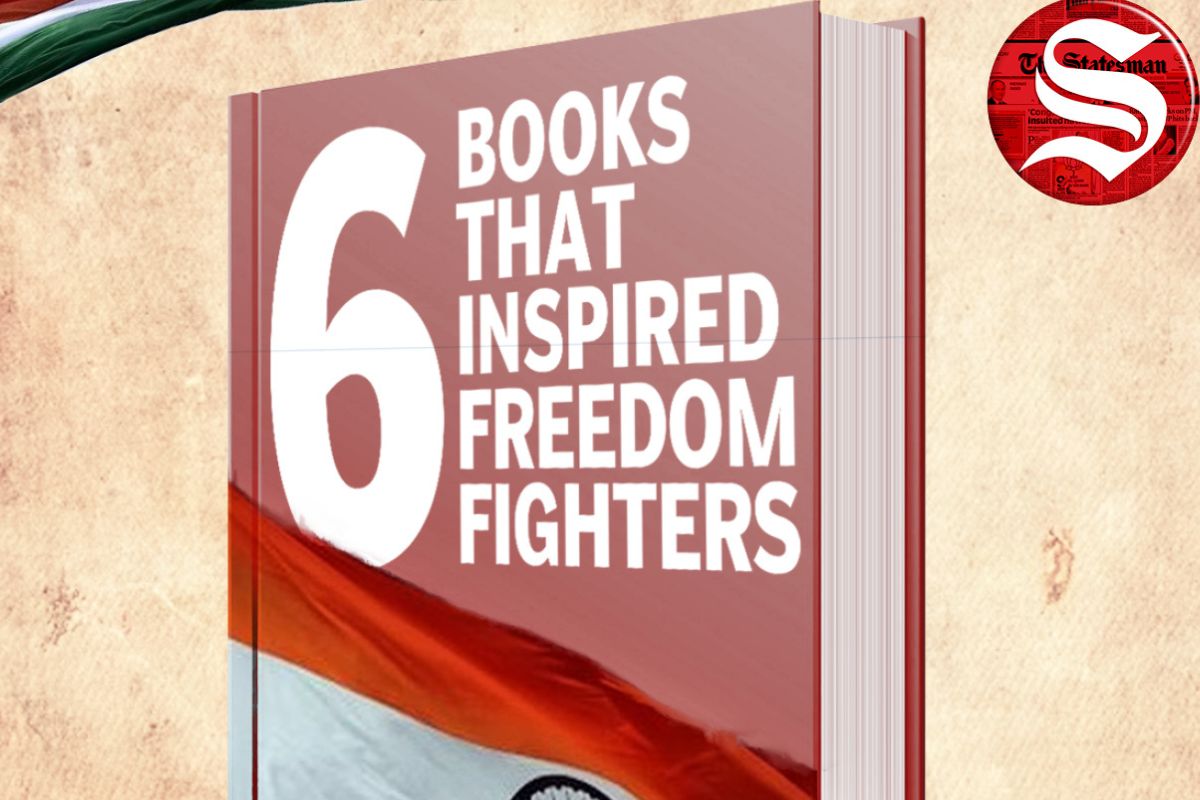Parents and children in east of India still willing to buy and read books: Survey
Children’s books are selling like hot cakes at the International Kolkata Book Fair at Boimela Prangan in Salt Lake.
Here are 10 influential books that played a significant role in shaping the thoughts and actions of these heroes
Manaswi | August 14, 2023 12:55 pm

Indian freedom fighters drew inspiration from a wide range of books that fueled their passion for independence and social change. Here are 10 influential books that played a significant role in shaping the thoughts and actions of these heroes:
“Bhagavad Gita”: This ancient Hindu scripture provided moral and philosophical guidance to many freedom fighters, emphasizing duty, righteousness, and selfless action.
Advertisement
Swami Vivekananda, a prominent spiritual leader and freedom fighter, drew inspiration from the Bhagavad Gita. His teachings and speeches emphasized the Gita’s principles of selflessness and service to humanity.
Advertisement
“Unto This Last” by John Ruskin: Mahatma Gandhi was deeply moved by this book’s ideas on social justice and simple living. It shaped his philosophy of nonviolent resistance and economic self-sufficiency.
Gandhi’s concept of “Sarvodaya” (welfare of all) was influenced by Ruskin’s ideas of economic equity. He integrated these principles into his campaigns, such as the Salt March, where he protested against British salt taxes.
“Civil Disobedience” by Henry David Thoreau: This essay advocated for nonviolent resistance to unjust laws, which deeply influenced Gandhi’s philosophy of satyagraha (truth force).
Gandhi’s salt satyagraha, modeled after Thoreau’s principles, saw thousands of Indians peacefully protesting the British monopoly on salt production by making their own salt.
“Gitanjali” by Rabindranath Tagore: Tagore’s poetry collection, exploring themes of freedom, spirituality, and nationalism, deeply resonated with Indian freedom fighters.
Tagore’s poem “Where the mind is without fear” became a rallying cry for the freedom movement, encapsulating the vision of a free and enlightened India.
“The Rights of Man” by Thomas Paine: This book advocated for human rights, equality, and democracy, influencing the thoughts of many Indian freedom fighters.
Bal Gangadhar Tilak, a prominent freedom fighter, was inspired by the ideals of “The Rights of Man.” He emphasized the importance of civil rights and self-governance in his fight against British rule.
“Annie Besant: An Autobiography” by Annie Besant: Besant’s autobiography chronicled her journey from British socialism to Indian nationalism, inspiring many freedom fighters.
Jawaharlal Nehru was influenced by Besant’s writings and activism. He saw her dedication to Indian causes as a reflection of his own commitment to the nation.
“Hind Swaraj or Indian Home Rule” by Mahatma Gandhi: This book articulated Gandhi’s vision for true self-governance and his critique of modern civilization.
Subhas Chandra Bose, a radical freedom fighter, was influenced by Gandhi’s ideas in “Hind Swaraj.” Though he later disagreed with Gandhi’s nonviolent approach, the book played a role in shaping Bose’s early political thinking.
“The Soul of India” by Bipin Chandra Pal: This book highlighted the essence of India’s culture and heritage, encouraging a sense of national pride and unity among Indians.
Pal’s writings, including “The Soul of India,” fuelled nationalist sentiments. His book played a role in awakening a sense of identity and solidarity among Indians.
“The History of the Russian Revolution” by Leon Trotsky: This book chronicling the Russian Revolution of 1917 inspired Indian freedom fighters to explore revolutionary methods in their struggle.
Bhagat Singh, inspired by Trotsky’s ideas, studied the Russian Revolution and considered its lessons when planning his own revolutionary actions against British colonial rule.
“Anandamath” by Bankim Chandra Chattopadhyay: This novel, with its patriotic and nationalist themes, kindled a sense of devotion to the motherland among freedom fighters.
The song “Vande Mataram” from “Anandamath” became a rallying cry for the freedom movement. Many leaders, including Rabindranath Tagore, were moved by its powerful depiction of India’s struggle.
Advertisement
Children’s books are selling like hot cakes at the International Kolkata Book Fair at Boimela Prangan in Salt Lake.
A unique book on the nostalgia embracing Kolkata titled Lattuparar Letti Kotha was launched at the ongoing 48th International Kolkata Book Fair (IKBF).
The Central Bureau of Investigation (CBI) has booked seven individuals in a case related to digital currency Ponzi schemes (an investment fraud that pays existing investors with funds collected from new investors), for allegedly promising high returns involving crypto currency transactions exceeding Rs 350 crore, sources said.
Advertisement
